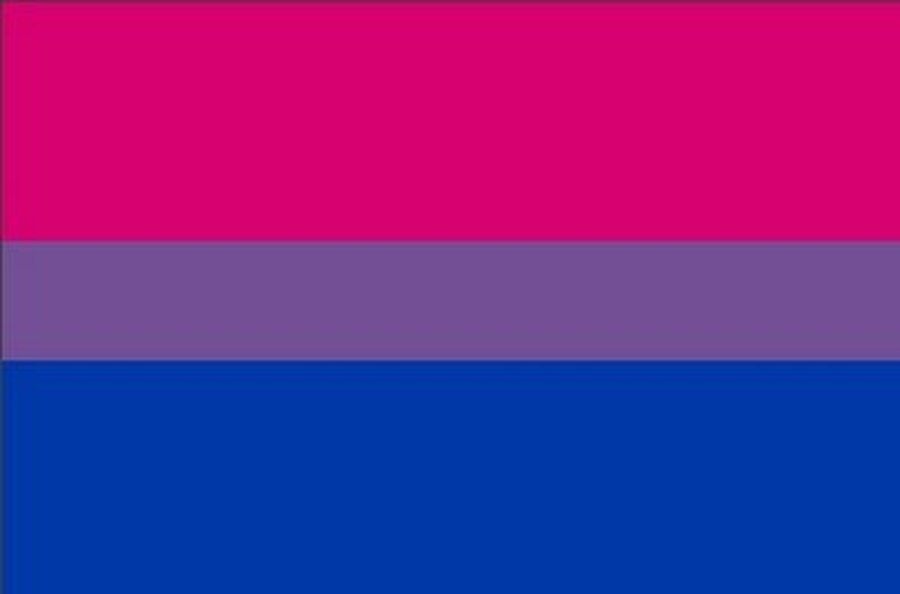“Old age is not for sissies,” said Bette Davis. If that is the case, and many of us believe it to be, then old age for bisexuals is for the truly courageous.
Bisexuals (young and old) have been underrepresented in research, media and the arts. For the most part, we are merged into the discussions of gay and lesbian aging. Issues confronting older lesbian and gay men do overlap with the experiences of old people who are bisexual, but only partially. Our aging-services and community providers have bisexuals accessing services even if they don’t realize it. Bisexuals exist both as seniors and as caregivers of elderly parents; they also function as spouses, partners, and as parents, siblings, daughters and sons in their biological and logical families.
Of significant importance is that bisexuals are rarely seen, and there is little to no room for bisexuality within the older generation. When a bisexual falls in love, they sometimes begin to identify (publicly or privately) as lesbian, gay or hetero and thus becomes invisible as a bisexual aging person.
What kind of behavior would I, as an aging bisexual, have to engage in for other people to see me as bisexual? Should I walk into the room with a man and a woman on each arm? Should I have multiple partners? Maybe I could leave someone for someone of a different sex (interestingly, in this scenario people still might not read me as bisexual, but rather as having finally “finished” coming out or “gone straight” or, as in my case, “having gone to the other side”).
After years of talking with other self-identified bisexuals, I learned our experiences are strikingly common. Nearly all of us have faced biphobia from parents, partners, friends and acquaintances, as well as within the LGBT community. And many of us find our identities routinely erased or rendered invisible, leaving us with the choice to remain unseen or come out over and over again.
Visibility is priceless. Older people are presumed to lose both sexual interest and sexual functioning as they age and are often perceived as inappropriate, senile and “dirty” (i.e., “dirty old men”) when they express their sexuality.
The term “bisexuality” was not fully embraced until the gay-rights movement was well underway and bisexuals were attempting to form bisexual communities. Many of our seniors never heard the word “bisexual.” Everyone now over 50 was already an adult when the American Psychiatric Association still listed homosexuality as a diagnosable mental illness. The APA never officially classified or declassified bisexuality; in fact, the Diagnostic and Statistical Manual of Mental Disorders never mentioned bisexuality at all.
Aging bisexuals often face a double whammy: society’s ageism and homophobia/biphobia, and from both hetero and non-hetero individuals. Seniors who chose marriage and family during oppressive younger years may be reconsidering their options and now identifying as bisexual. Others who have lived as lesbians or gay men may want to explore other-sex attractions they never lost or have rediscovered. In our own queer community, many gays and lesbians have a reputation for cutting off women and men who “go to the other side.” Non-gay folks often reject bisexual seniors as “fence sitters” or for using heterosexual privilege and “passing” when convenient. In truth, to “pass” for straight and have to deny your bisexuality is as painful as it is for gay and lesbian seniors to have to live in (or go back into) the closet.
Being openly bisexual is in many ways still a radical act, even in the LGBT community. Bisexuality is a big, gender-inclusive umbrella. Bisexual community activists have long embraced non-binary people and included those who identify as pansexual, queer and fluid. One definition that is widely used to define bisexuality is bi activist Robyn Ochs’s definition: “I call myself bisexual because I acknowledge that I have in myself the potential to be attracted — romantically and/or sexually — to people of more than one sex and/or gender, not necessarily at the same time, not necessarily in the same way and not necessarily to the same degree.”
Aging-services providers can provide affirmative care in the following ways:
- Believe that I exist. Bisexuality is a valid sexual orientation.
- Don’t try and talk me into redefining my identity into something more comfortable for you. Or tell me that it is “just a phase.”
- Celebrate bisexual culture. We have a rich history and many daring voices who have expressed love beyond the monosexual confines. Remember the “B” in LGBT programming, services and diversity.
- Ask me, if appropriate, about my other-sex and same-sex relationships. Bisexuals live our lives in multiple ways. Some of us would like to talk about our relationships without feeling judged.
- Speak up when bisexual people are being excluded or defamed. We all know that our silence speaks loudly. Often, bisexual people (young and old) need each other for support and for community, if for nothing more than the relief that comes with being among others to whom we don’t have to defend ourselves.
Terri Clark has been doing work in health education, training and facilitation for nearly 30 years, and is currently the coordinator of prevention services at Action Wellness and a certified trainer with SAGE (Services and Advocacy for GLBT Elders). Clark is co-author and editor for a teaching manual that includes more than 50 lesson plans entitled “Orientation: Teaching about Identity, Attraction and Behavior.” She is currently working on a number of projects to advance the field of sexuality and aging, including the sexual health of older adults.
